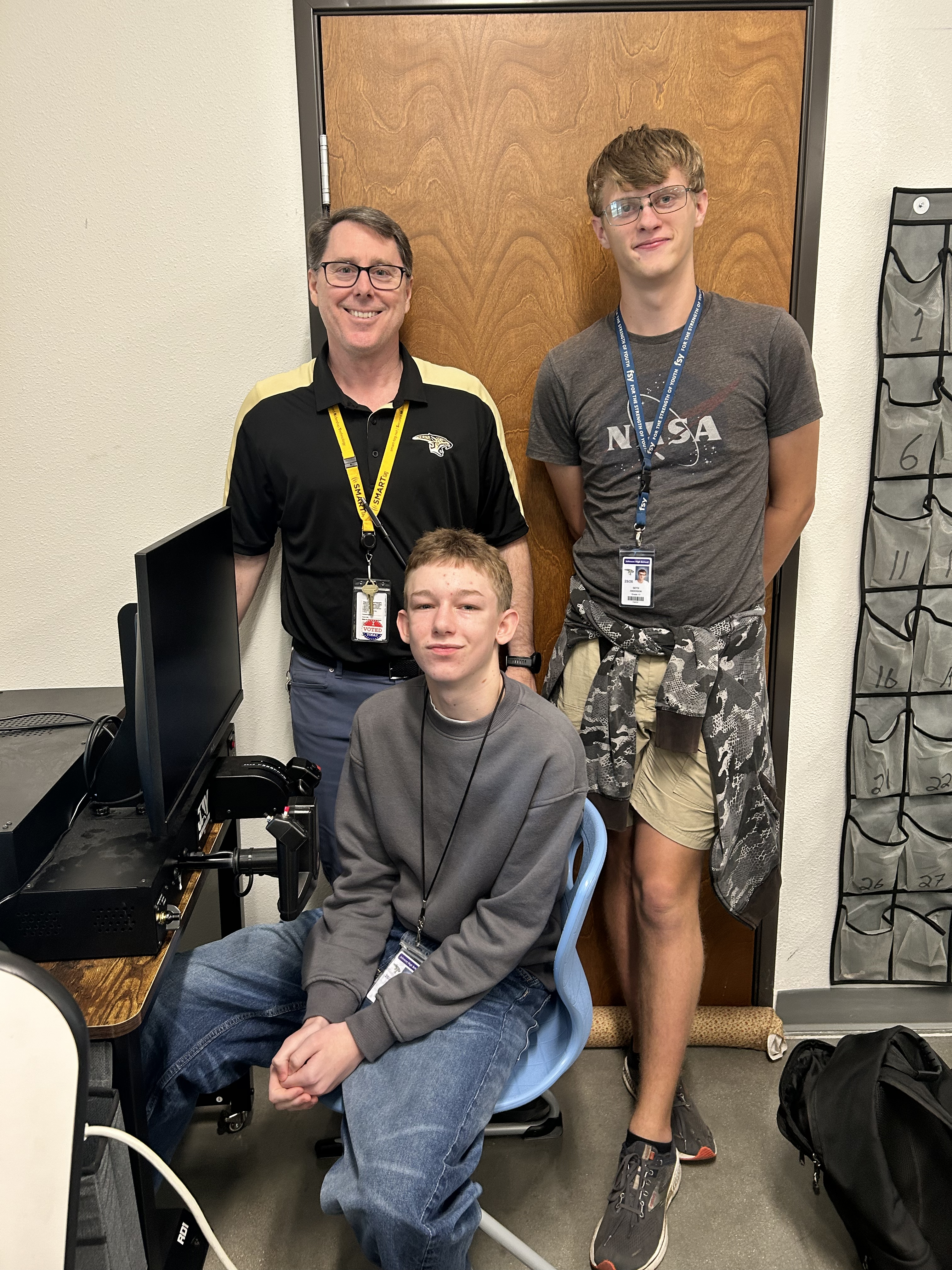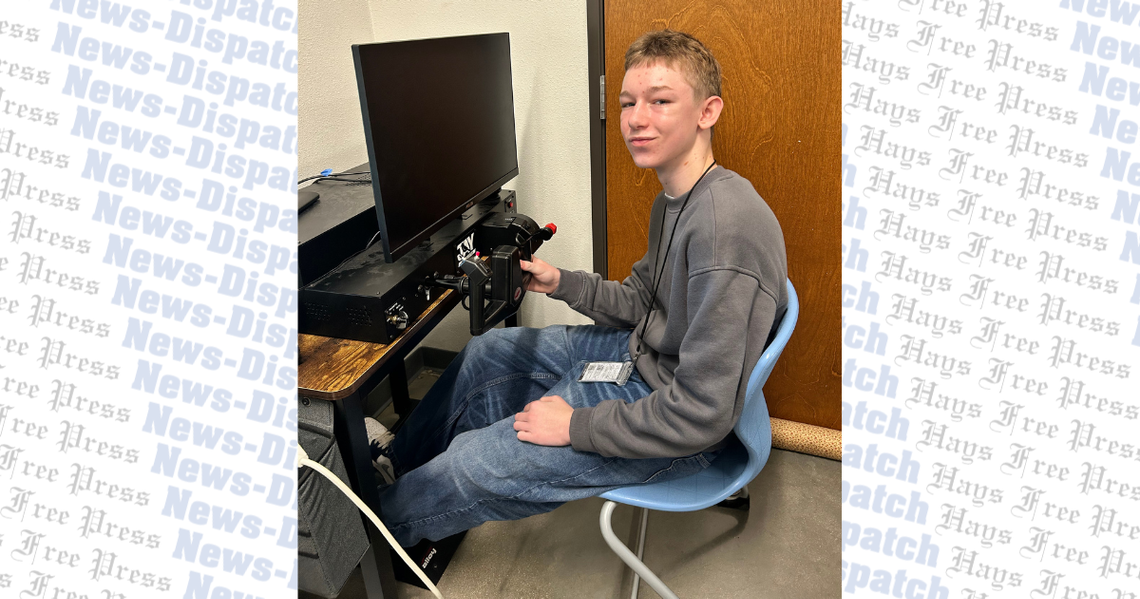BUDA — Johnson High School students are preparing to take flight — both in person and via drone — through the school’s aviation program.
The program is part of the district’s career and technical education curriculum, which aims to “deliver rigorous, relevant instruction designed to prepare students for success in the high-demand, high-skills careers of the 21st century,” according to its website, though it was not always available.
JHS automotive teacher, Bert Bronaugh, noted that the former principal had a big interest in aviation; the teacher even recalled him flying around the school in a private plane. Bronaugh stated that he already had his drone license and so, when the program was approved in 2021 by the Hays CISD Board of Trustees, he began teaching it, alongside his automotive classes.

This continued, with aviation adding a new course each year for its progressing students, until Bronaugh had no room in his schedule to continue leading it. So, Duff McClain took over for the 2025-26 school year.
“When they saw that I was a previous engineer instructor, they’re like, ‘Aviation is engineering planes to fly, so you should be able to adapt to that,’” said McClain. “I had previously gotten my Part 107 drone license in the spring, before I ever knew about the position [and] it seemed like a natural fit.”
Currently, there are three levels of aviation, said McClain, since the junior class is composed of the students that launched the program in 2021. The final course will launch for the 2026-27 school year and will focus on practicums.
The first class, titled Introduction to Aerospace and Aviation, covers the basics of flight, from flying squirrels to human gliders and the Wright Brothers to touching on aspects of the National Aeronautics and Space Administration. Following this is Introduction to Aircraft Technology, where students get comfortable with the idea of flight, and then, Aviation Ground School.
The latter is when students should be pushing toward their Part 107 drone licenses and pilots test, said McClain, since, despite many assuming the classes focus on airplanes, it covers drone flights, as well.
One student, Seth Anderson, 17, has already passed.
Anderson initially signed up for the program after seeing it revealed his eighth-grade year and took part in a discovery flight, which is where teenagers can fly a plane for $100 with a trainer to determine if it is something they are interested in.
“I was expecting [focus on] planes, but I’ve actually really liked the drones and, since I got my Part 107, which allows me to fly drones commercially, I’ve liked being able to use the drones that we have to make more advanced models,” said Anderson.
The junior has even been paid for two jobs involving the technology — one for a gender reveal in a baby shower and another taking photos for a local pizza shop.
Mason Berthiaume, 16, has not taken the Part 107 test yet, but he enjoys the program so much that he created an afterschool club for it, purely to spend more time participating in its education.
The 16-year-old’s father works for Southwest Airlines, he explained, so he has always been surrounded by flight. Similar to Anderson, he took a discovery flight and fell in love.
“I’ve really liked being able to fly and just have more knowledge about flights,” said Berthiaume, who stated that one of his favorite parts is using the flight simulator that the class offers.
Although the class is fun, the pair said that it is not without its challenges, as they are required to remember numerous regulations and codes for flights.
Ultimately, Anderson hopes to use his newfound skills in drone flying as a back-up plan, if not his main job in the future, and Berthiaume aims to become a commercial airline pilot.
As the program grows, McClain stated that he hopes to build partnerships with local organizations, such as construction companies or real estate agents, to “fund” the students’ drone license. He explained that the test is currently $75, which the student has to pay for out of pocket. If companies partner with the class, they would then offer the student $75 to take photos or videos of their property. This would allow the student to be reimbursed for taking the test, while gaining experience for their resume.
He also shared that he is looking into an opportunity out of Georgetown — Tango Flights. According to its website, the nonprofit is an organization that aims to “inspire the next generation of engineers, pilots, aviation mechanics and technicians.” The parts of a plane are delivered to the school registered for the program, McClain continued, and allows students to build it over the course of two years, until they are able to fly it. Then, it is sold and replaced with the parts of a new plane.
“[This program is important because] it’s an easy connection between the nuts and bolts knowledge of school to skills that you’ll actually apply in a career,” said McClain.
The opportunities for careers are endless, he concluded, as there are opportunities to be a pilot, part of the flight crew, work on the mechanical side, fly drones and more.
To learn about the aviation program, visit bit.ly/4hVRAq0.










